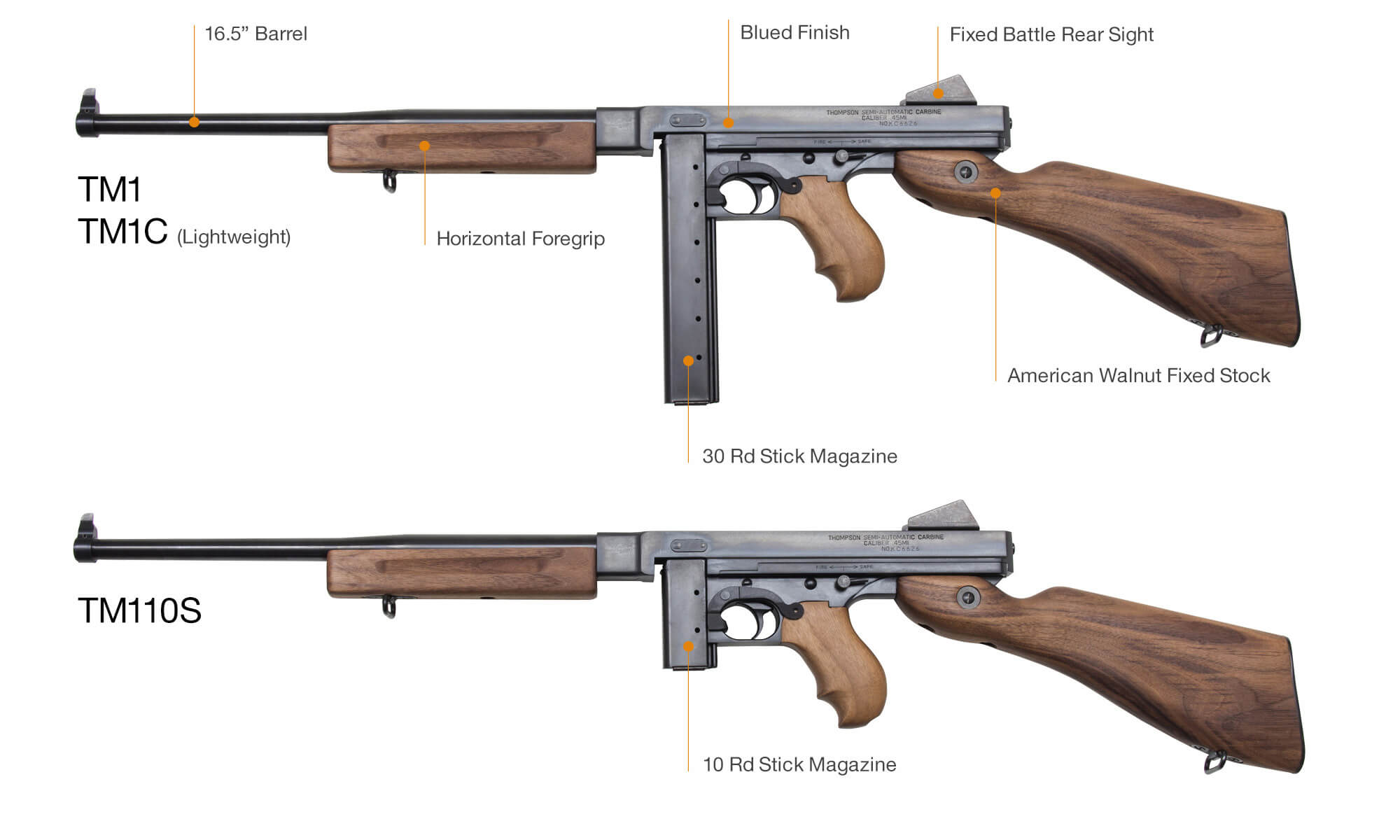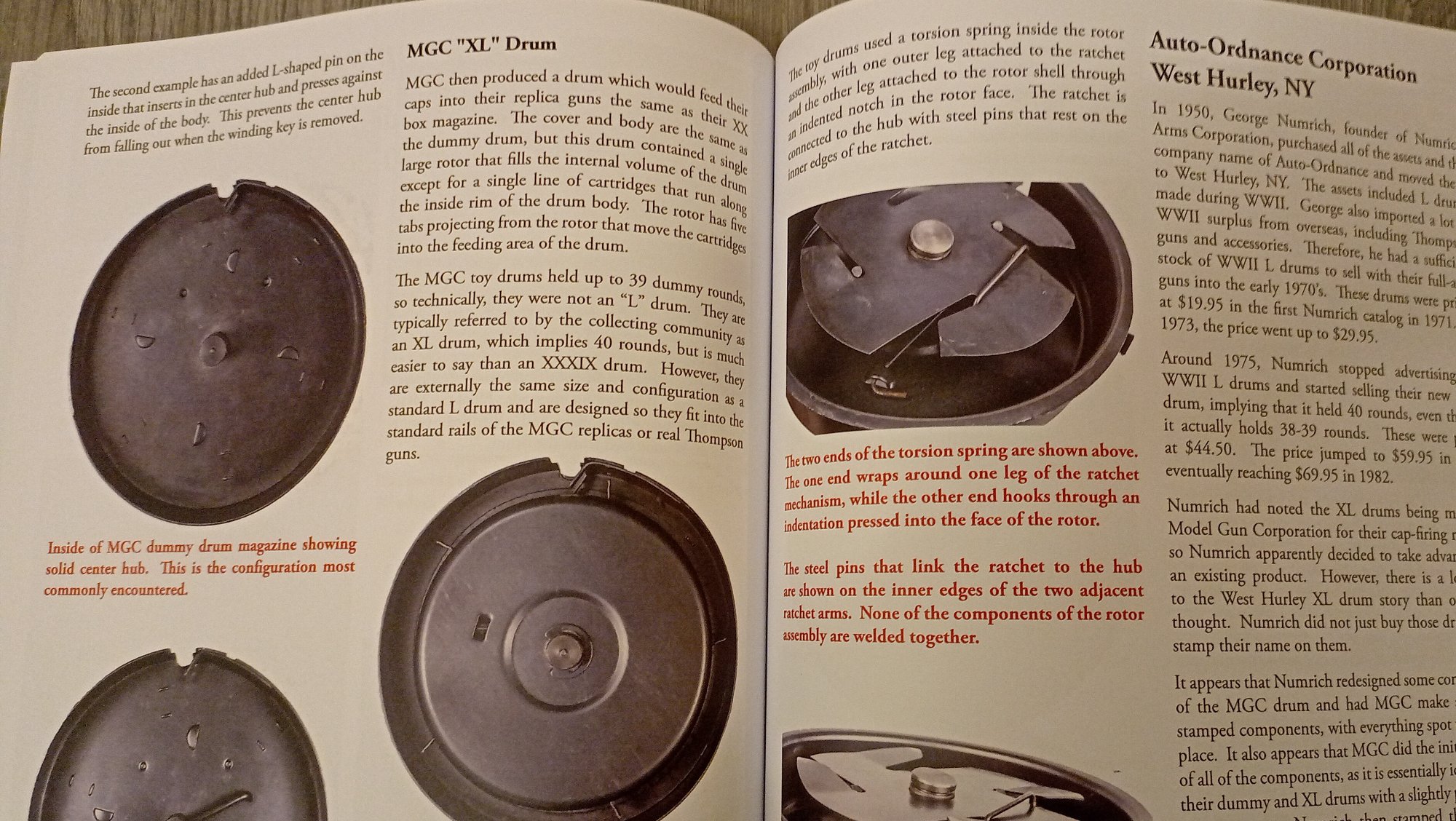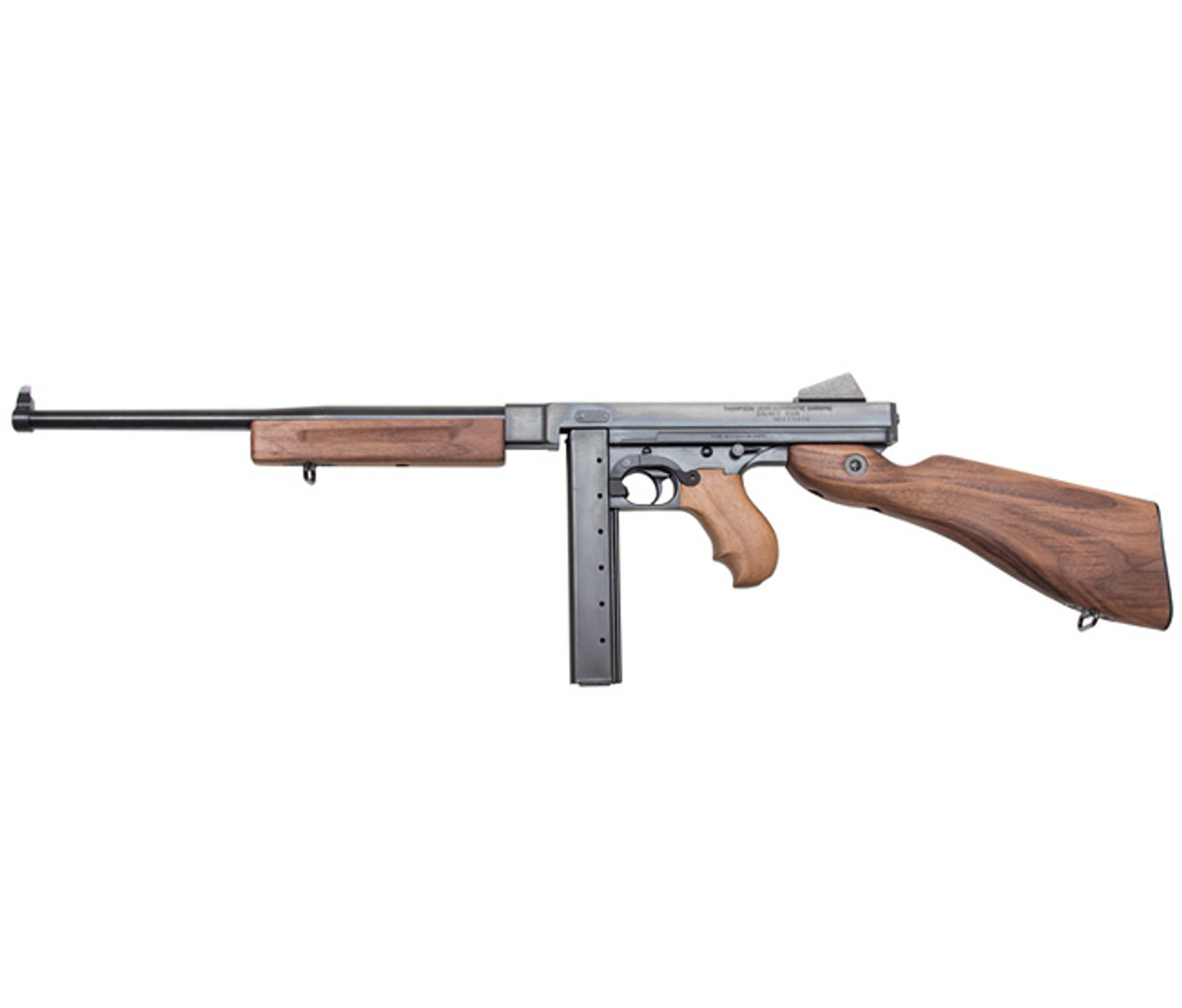
In contrast, the “XX” twenty-round box magazine was light and compact. It tended not to rattle, and could be inserted with the bolt safely closed. The box magazine was quickly attached and detached, and was removed downward, making clearing jams easier. The box magazine tripped the bolt open lock when empty, facilitating magazine changes. An empty box was easy to reload with loose rounds. However, users complained that it was limited in capacity. In the field, some soldiers would tape two “XX” magazines together, in what would be known as “jungle style”, to quicken magazine changes.[55]

Two alternatives to the “L” 50-round drum and “XX” 20-round box magazines were tested 6 December 1941, at Fort Knox, Kentucky. An extended thirty-round box magazine and a forty-round magazine, which were made by welding two 20-round magazines face to face, jungle style, were tested. The testers considered both superior to either the “XX” box or “L” drum. The 30-round box was approved as the new standard in December 1941 to replace the “XX” and “L” magazines.[56] (The concept of welding two box magazines face-to-face was also carried over to the M42 submachine gun.)
Thompson Machine Carbine (TMC)
[edit]

In 1940, Commonwealth troops in Egypt and North Africa were issued commercial model Lend-Lease Colt- and Savage-manufactured M1928s. Section leaders carried them instead of pistols or rifles. Many of the Colt models had French-language manuals packed with them as they had been abruptly diverted to England after the fall of France. They soon discovered that the weapon was prone to jamming due to sand. To fix this, the armorers removed the Blish Lock and replaced it with a hex bolt to keep the cocking handle and bolt together. The 20-round Type XX magazines had their peep-holes welded shut to keep sand out and the 50-round Type L drums were discontinued. Ammunition was scarce as it was either in small lots of Lend-Lease commercial ammo or obtained from adjacent American troops. It was later replaced by the 9mm Sten gun and Lanchester SMG.

Models used in the Pacific by Australian troops had their sling swivels remounted on the left side to allow it to be fired more easily while prone. A metal sling mount was fitted to the left side of the wooden buttstock. Ammunition was manufactured in Australia or obtained from adjacent American troops. It was later replaced by the Owen Machine Carbine.
if you can find a real TMC with type xx magazine holes and all much appreciated. 
